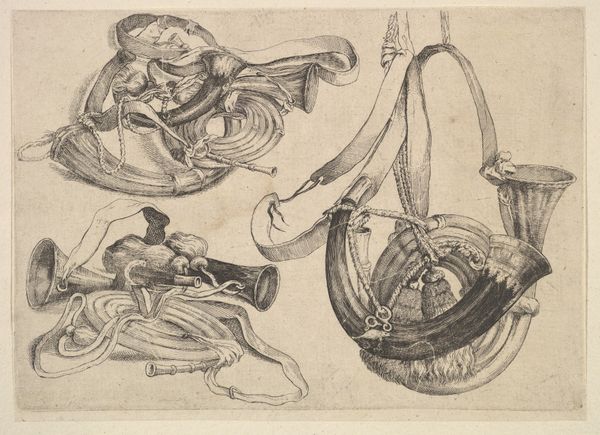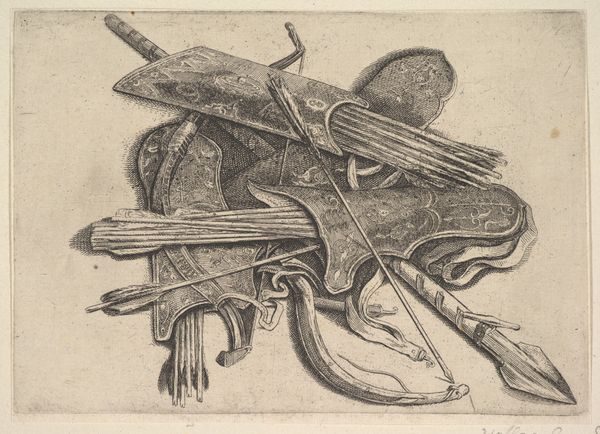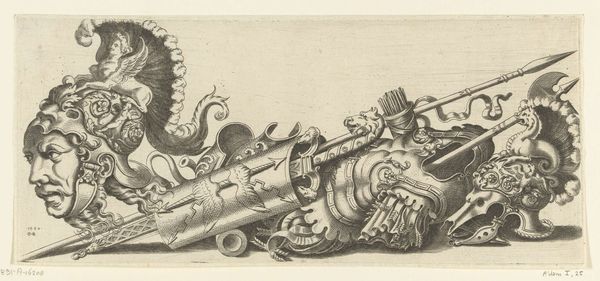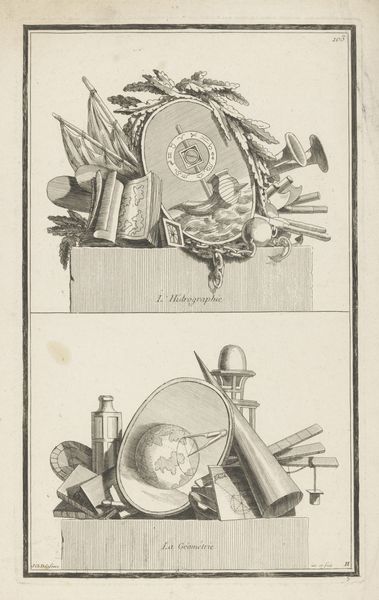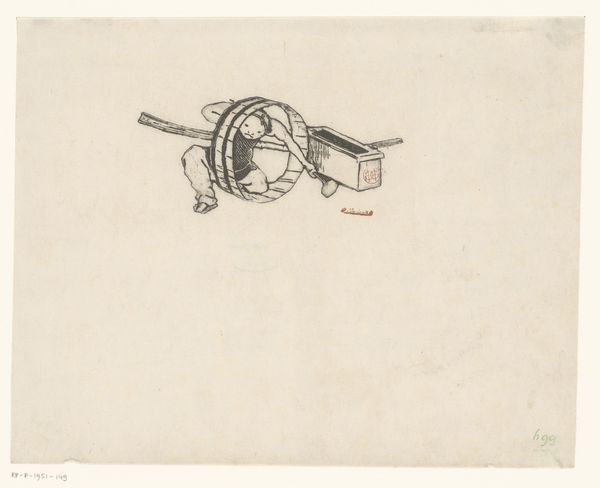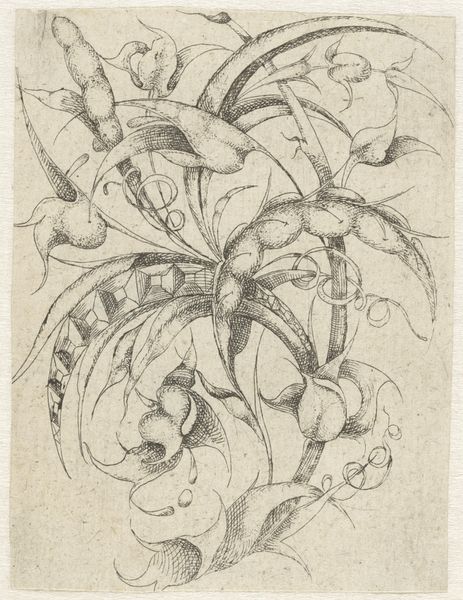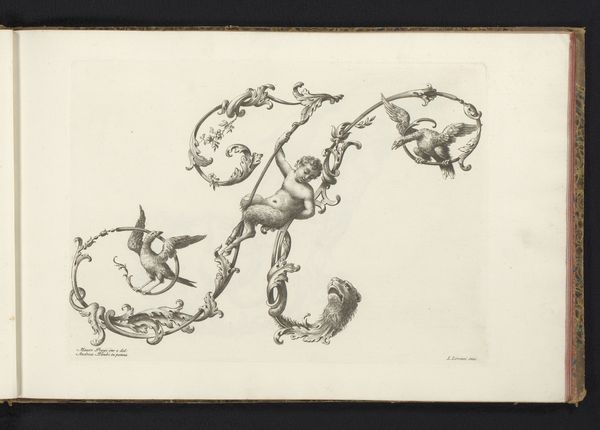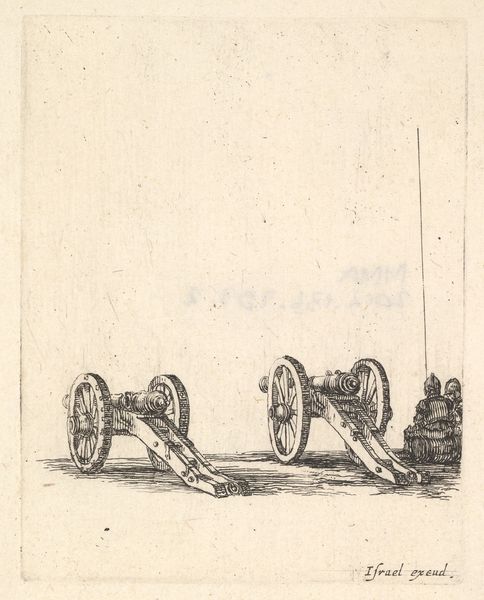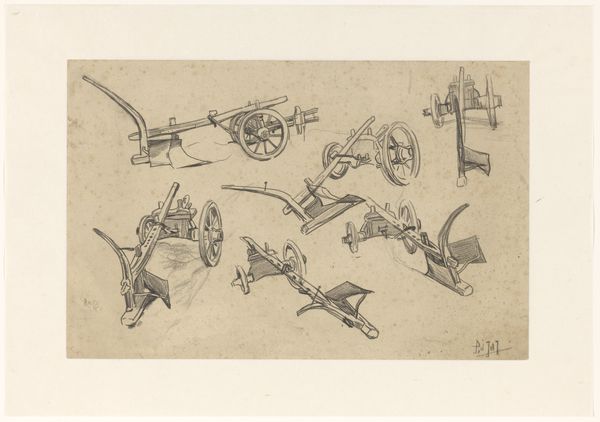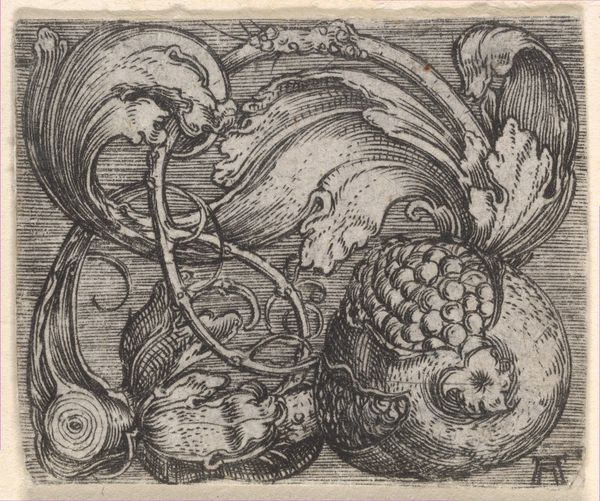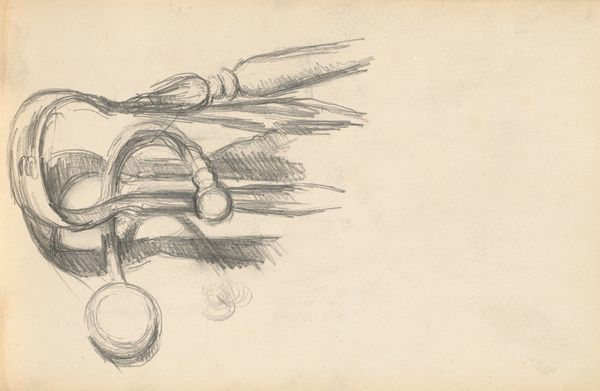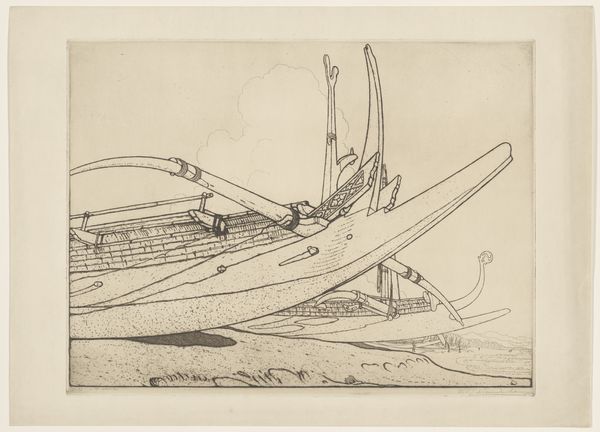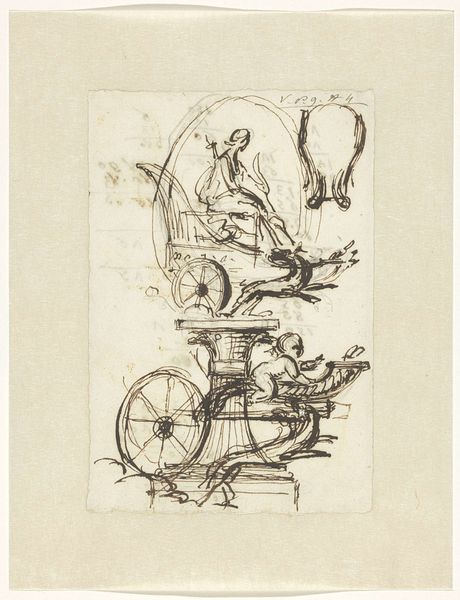
drawing, print, etching, engraving
#
drawing
#
baroque
# print
#
etching
#
engraving
Dimensions: Plate: 5 11/16 × 7 15/16 in. (14.4 × 20.2 cm) Sheet: 5 11/16 × 7 15/16 in. (14.4 × 20.2 cm)
Copyright: Public Domain
Editor: So, here we have Wenceslaus Hollar’s "Five Hunting Horns," made in 1647. It's a print, etching and engraving on paper. I'm struck by the almost scientific precision in rendering these objects. How would you interpret this work purely from its visual elements? Curator: Well, focusing on the intrinsic visual elements, one is immediately drawn to the masterful rendering of textures and forms achieved through the etching technique. Note the contrasting smoothness of the horn bodies against the rougher texture suggested in the cords binding them. It begs the question: does this deliberate variation of the surface quality influence the composition's overall dynamism? Editor: I see what you mean about the contrast, and the forms almost feel like a still life, but without the context... do the shapes interact in a way that’s pleasing? It's not quite clear to me what story the forms are telling, beyond showing hunting equipment. Curator: Consider how Hollar uses line and tone. The delicate lines create volume, defining the contours of the horns, but do you notice how they also create areas of ambiguity? Do these areas contribute to a flattening effect, causing us to question the very space the objects occupy? It certainly presents a kind of structured pictorial space worth exploring. Editor: That's interesting. So the details almost obscure the sense of depth. Now I’m noticing how he really highlighted each part’s individual form. Curator: Precisely. This emphasis on form elevates it beyond mere utility. What seemed documentary evolves into abstraction. The composition itself invites analysis of relationships between light and shadow and also textured form and tonal representation, shifting its importance beyond practical hunting horns. Editor: I was looking for meaning beyond the horns themselves. The emphasis is not necessarily meaning, but it could shift one's thinking about art beyond the historical period! Curator: And conversely it focuses us on the visual tools we have at our disposal when decoding and discussing artworks!
Comments
No comments
Be the first to comment and join the conversation on the ultimate creative platform.
